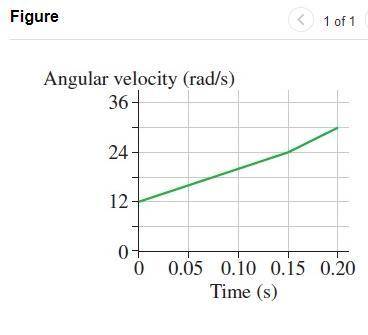
Physics, 03.06.2021 01:00 katiebonar13
If the ball is 0.60 mm from her shoulder, what is the tangential acceleration of the ball? This is the key quantity here--it's a measure of how much the ball is speeding up. Express your answer in m/s2 and in units of g

Answers: 1
Another question on Physics

Physics, 22.06.2019 17:50
Which of the following best describes internal energy? a. the difference between the kinetic and potential energies of the particles in a system b. the sum of the kinetic and potential energies of the particles in a system c. the sum of the kinetic and thermal energies of the particles in a system d. the difference between the kinetic and thermal energies of the particles in a system
Answers: 2

Physics, 22.06.2019 19:30
Amass m = 74 kg slides on a frictionless track that has a drop, followed by a loop-the-loop with radius r = 18.4 m and finally a flat straight section at the same height as the center of the loop (18.4 m off the ground). since the mass would not make it around the loop if released from the height of the top of the loop (do you know why? ) it must be released above the top of the loop-the-loop height. (assume the mass never leaves the smooth track at any point on its path.) 1. what is the minimum speed the block must have at the top of the loop to make it around the loop-the-loop without leaving the track? 2. what height above the ground must the mass begin to make it around the loop-the-loop? 3. if the mass has just enough speed to make it around the loop without leaving the track, what will its speed be at the bottom of the loop? 4. if the mass has just enough speed to make it around the loop without leaving the track, what is its speed at the final flat level (18.4 m off the ground)? 5. now a spring with spring constant k = 15600 n/m is used on the final flat surface to stop the mass. how far does the spring compress?
Answers: 3

Physics, 22.06.2019 19:30
Which of the following compounds would be primarily ionic? methane, ch4, ammonia nh3, calcium chloride, cacl2, or carbon dioxide, co2
Answers: 1

Physics, 22.06.2019 21:10
An athlete swings a ball, connected to the end of a chain, in a horizontal circle. the athlete is able to rotate the ball at the rate of 8.13 rev/s when the length of the chain is 0.600 m. when he increases the length to 0.900 m, he is able to rotate the ball only 6.04 rev/s. (a) which rate of rotation gives the greater speed for the ball? 6.04 rev/s 8.13 rev/s (b) what is the centripetal acceleration of the ball at 8.13 rev/s? m/s2 (c) what is the centripetal acceleration at 6.04 rev/s? m/s2
Answers: 2
You know the right answer?
If the ball is 0.60 mm from her shoulder, what is the tangential acceleration of the ball? This is t...
Questions



Mathematics, 31.03.2020 18:01

Mathematics, 31.03.2020 18:01



Mathematics, 31.03.2020 18:01





Mathematics, 31.03.2020 18:01





Advanced Placement (AP), 31.03.2020 18:02



 = 12 rad/s
= 12 rad/s = 24 rad/s
= 24 rad/s


